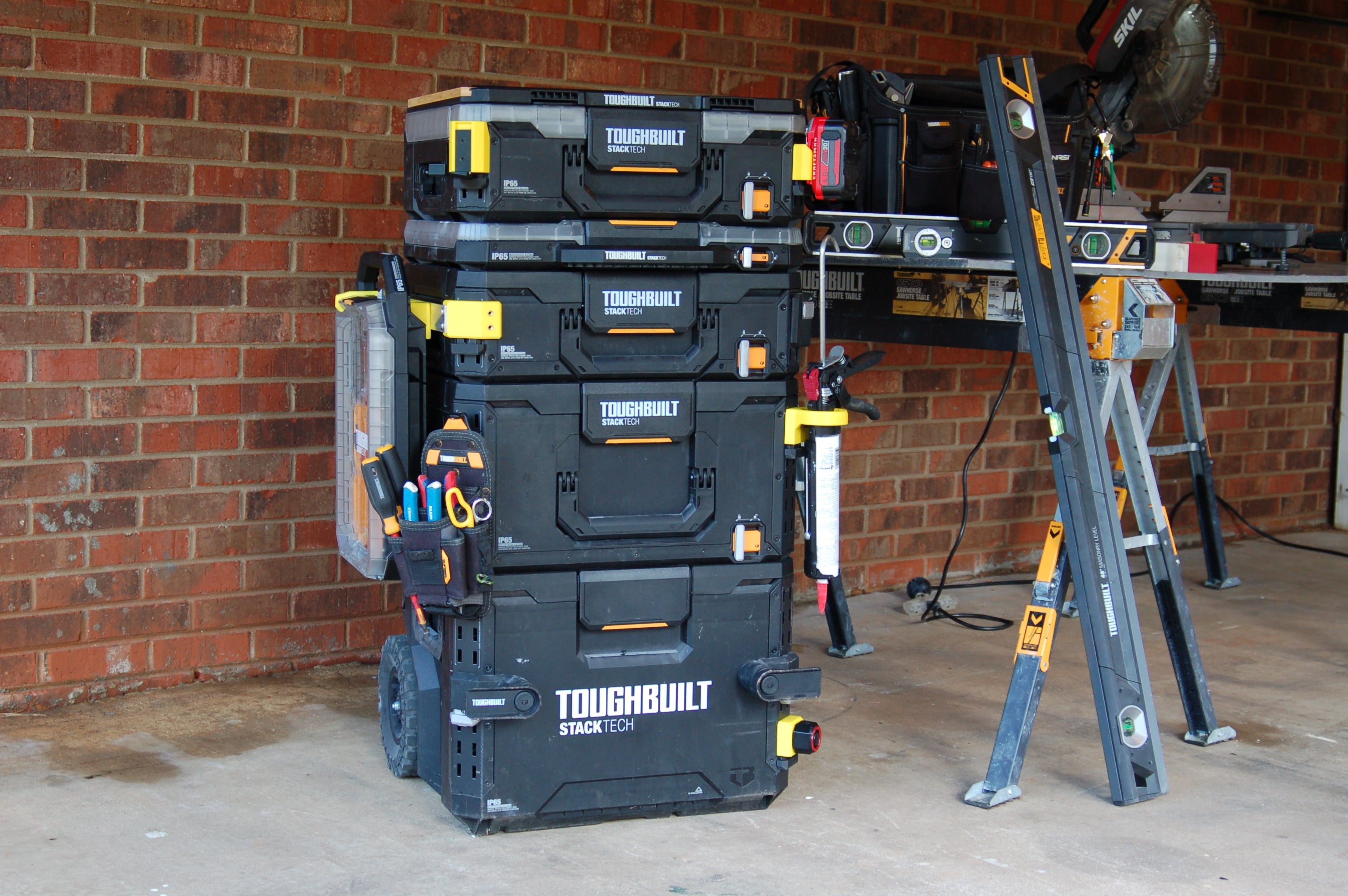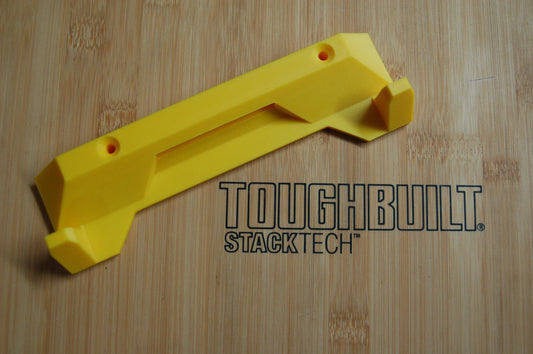
Toughbuilt Stacktech Accessories
Our Expertise
At Thermo Printing, we specialize in designing and 3D printing custom modifications for the Toughbuilt StackTech system, enhancing functionality, organization, and efficiency for professionals and DIY enthusiasts. With over three years of hands-on 3D printing experience and more than a decade of expertise in mechanical and graphic engineering, we bring innovative, high-quality solutions tailored to meet the unique demands of tradespeople, technicians, and workshop enthusiasts.
Our custom mods improve the adaptability of Toughbuilt StackTech, ensuring that your tool storage and organization work exactly the way you need them to. From enhanced brackets and mounts to specialty tool holders and inserts, we craft durable, precision-engineered components designed for real-world use.
At Thermo Printing, we combine cutting-edge design, engineering precision, and 3D printing technology to create functional, rugged, and tailor-made modifications that take your Toughbuilt system to the next level.

Now in more colors
Choose the color to match your tools.

Accessory Rail
The accessory rail is a modular mounting system that allows you to bolt-on various attachments or customize it with your own add-ons, providing versatility and expandability for your setup.

Accessory Clip
The Accessory Clip allows you to attach various mounts to the metal corner brackets of the StackTech system, enabling secure and customizable accessory integration.

Organizer
Enhance your Toughbuilt StackTech system with custom 3D-printed organization solutions like tool dividers, modular bins, label holders, and quick-access mounts. These additions optimize space, improve workflow, and keep your tools and accessories neatly arranged for maximum efficiency.
Best Sellers
-
SecureClip - Small Organizer
Regular price $9.99 USDRegular priceUnit price / per -
Caulking Gun Clip
Regular price $16.99 USDRegular priceUnit price / per -
Accessory Rail
Regular price $49.99 USDRegular priceUnit price / per -
Small Organizer Bolt-On Mount
Regular price $14.99 USDRegular priceUnit price / per
What is 3D Printing?
3D Printed Parts & Adaptive Cubic Infill
3D printed parts are components manufactured using additive manufacturing, where material is deposited layer by layer to create complex geometries that would be difficult or impossible to achieve with traditional manufacturing methods. These parts can be made from various materials, including plastics, resins, and metals, and they are widely used in industries such as aerospace, automotive, medical, and consumer products.
One key factor in 3D printing is infill, which determines the internal structure of a part. Infill affects the strength, weight, material usage, and print time of a part.
Adaptive Cubic Infill
Adaptive cubic infill is an advanced infill pattern designed to optimize strength and material efficiency by varying the density of the infill depending on the structure's needs. Unlike uniform infill patterns, adaptive cubic infill increases density in areas that require more support (such as near perimeters or stress points) while reducing it in less critical sections.
Benefits of Adaptive Cubic Infill:
- Strength Where Needed: It provides higher infill density in areas subjected to higher loads while keeping low-density regions to save material.
- Reduced Material Usage: By using material efficiently, it lowers print costs while maintaining structural integrity.
- Faster Print Times: Since material isn't wasted in unnecessary areas, prints complete faster compared to solid or high-density uniform infills.
- Lightweight Yet Durable: The internal structure is optimized to be lightweight while maintaining rigidity, making it ideal for functional parts.
This infill type is particularly useful for mechanical parts, enclosures, and high-strength prototypes, where balanced strength and efficiency are critical. Would you like recommendations on slicer settings for your specific 3D printing needs?

Testing Of The clip
Explore the design principles and materials that support a 45-pound weight capacity







